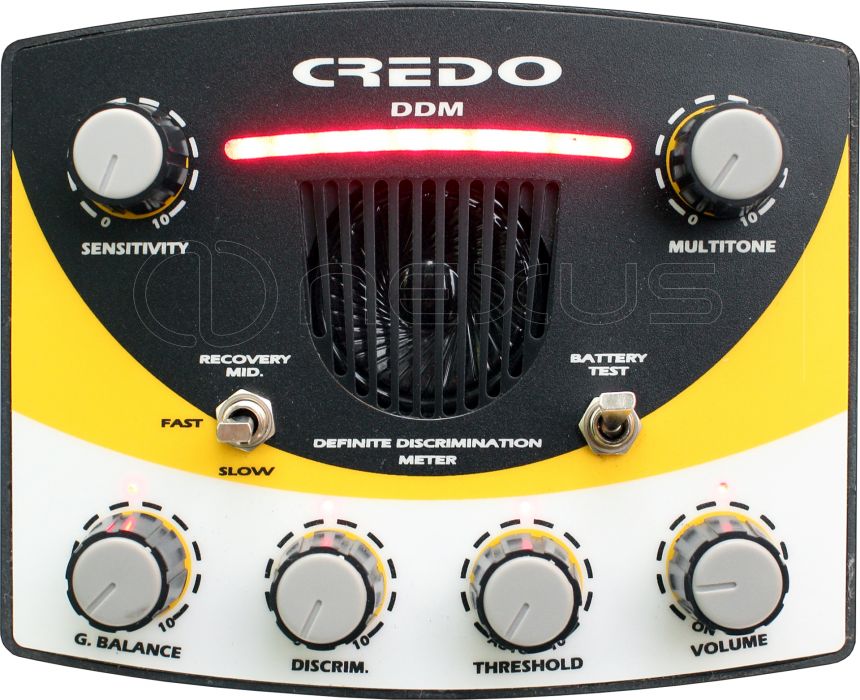INTERNATIONAL TEST: Nexus CREDO DDM – Pure Power!
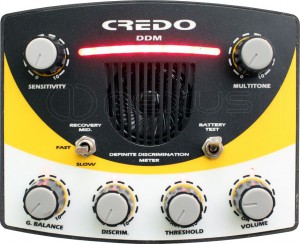 For a long time I’ve desired to put my hands on a Nexus metal detector. This English brand, on the market since 2004, was always tied to high power products. Previous generation of Nexus detectors’ users always confirmed this axiom, with special highlight on their detection depth capabilities. Alas, the same customers were sometimes disappointed about difficulty to control stability of those machines, especially on the field. We could indicate the Nexus detectors as “Throughbred Stallions” that need to be tamed with patience and perseverance. Mr. Georgi Chaushev, chief designer and Nexus CEO, that we will soon interview, ante up with a new generation of even more poweful metal detectors with innovative and very interesting features.
For a long time I’ve desired to put my hands on a Nexus metal detector. This English brand, on the market since 2004, was always tied to high power products. Previous generation of Nexus detectors’ users always confirmed this axiom, with special highlight on their detection depth capabilities. Alas, the same customers were sometimes disappointed about difficulty to control stability of those machines, especially on the field. We could indicate the Nexus detectors as “Throughbred Stallions” that need to be tamed with patience and perseverance. Mr. Georgi Chaushev, chief designer and Nexus CEO, that we will soon interview, ante up with a new generation of even more poweful metal detectors with innovative and very interesting features.
This year Nexus introduced a new line of detector that will substitute the previous one that we mentioned above. Four brand new models: Standard Mk2, Credo DDM, Credo and Bonanza. I’ve listed them following the performance level: from the top of the line Standard MK2, down to the economic entry level Bonanza.
While we’re waiting to test the high-end model (hope as soon as possible), the Italian distributor Mediaelettra have sent us the second model: Credo DDM, where DDM stands for Definite Discrimination Meter. This DDM model differs from its “brother” Credo for the visual representation of target’s NON FERROSITY through a series of red LEDs. The more conductive is the target, the more LEDs will light up. This feature, together with its multitone capabilities, will help the user to easily understand if the detected target is “good” or not. I take the chance to tell you that the high-end model, Standard Mk2, features a dual color LED system: blue light for ferrous targets, red light for non ferrous ones.
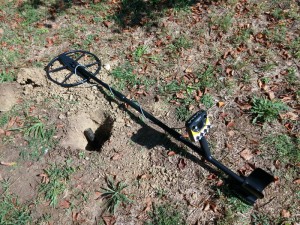 But the interesting features don’t stop here! First of all we have to mention that Credo DDM is a Single Frequency VLF/IB NO-MOTION machine. For non-experts, this means that it will be able to detect metallic objects even without keep moving the coil. NO-MOTION machines are very recommended in particular search situation where moving the coil could be somehow difficult due to natural obstacles (rocks, roots, plants etc) or where target separation is a key factor (e.g. battlefields). Another interesting feature is the possibility to change the operating frequency by just changing the coil. This feature, already known by Minelab X-Terra owners, allows the user to adapt the detector to the different kind of target we’re looking for or to the different soil type. Nexus Credo DDM comes with a 13” DD stock coil that makes it work at 6 kHz, a very good frequency for high conductive coins and relics on not-to-much mineralised soild. Users could also buy several spare coils, as 10” DD running at 7 kHz for a better target separation, as 10”DD running at 18 kHz, to look after very tiny or thin objects, or as a 7” DD at 8 kHz, for trashy areas or where narrow spaces are critical.
But the interesting features don’t stop here! First of all we have to mention that Credo DDM is a Single Frequency VLF/IB NO-MOTION machine. For non-experts, this means that it will be able to detect metallic objects even without keep moving the coil. NO-MOTION machines are very recommended in particular search situation where moving the coil could be somehow difficult due to natural obstacles (rocks, roots, plants etc) or where target separation is a key factor (e.g. battlefields). Another interesting feature is the possibility to change the operating frequency by just changing the coil. This feature, already known by Minelab X-Terra owners, allows the user to adapt the detector to the different kind of target we’re looking for or to the different soil type. Nexus Credo DDM comes with a 13” DD stock coil that makes it work at 6 kHz, a very good frequency for high conductive coins and relics on not-to-much mineralised soild. Users could also buy several spare coils, as 10” DD running at 7 kHz for a better target separation, as 10”DD running at 18 kHz, to look after very tiny or thin objects, or as a 7” DD at 8 kHz, for trashy areas or where narrow spaces are critical.
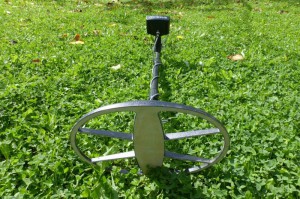 The coils are made in fiber glass to be lighter than epoxy resin ones and to avoid tuning drifts for long period of time. The 13” DD stock coil is not so heavy, taking in consideration its generous size. I also want to highlight that Nexus’ resonant coils are maniacally factory tuned to obtain top performance (up to 99% efficiency) and stability.
The coils are made in fiber glass to be lighter than epoxy resin ones and to avoid tuning drifts for long period of time. The 13” DD stock coil is not so heavy, taking in consideration its generous size. I also want to highlight that Nexus’ resonant coils are maniacally factory tuned to obtain top performance (up to 99% efficiency) and stability.
Materials quality is truly good. After mounting the detector and firmly turned the camlocks, it will be solid and without any kind of mechanical clearance. Its structure relies on a “Andersen-Type” straight collapsible stems that allow a very comfortable use on any kind of terrain. Even on steep slopes it will be easy and not fatiguing to use. The control box is mounted over the handle while the battery compartment (10×1.5V AA batteries are needed) is placed under the arm rest.
Generally speaking, the machine weight is very well balanced even though the 13”DD tend to move the balance point a little bit in the front part. I’m sure that 10” DD and 7” DD will allow a much better ergonomics.
 The control box features 6 knobs and 3 mechanical switches to control: Sensitivity, Ground Balance, Discrimination, Multitone, Threshold, Volume, Recovery Speed (3 Modes: Slow, Medium, Fast), Battery Test and Search Mode (All-Metal / Discrimination). To turn on the Credo DDM you will just have to turn the volume knob clockwise. A click will be heard and the battery charge status will be displayed with the red LEDs. If we want to familiarize with the metal detector, its sounds, the visual indication and other things without loosing too much time with settings, it is possible to activate the FULL AUTOMATIC mode that will give the detector almost a total control of sensitivity, ground balance and discrimination. In this operating mode we should only care about sweeping the coil on the ground and dig the “good” target that will lit up the red LEDs. Obviously this AUTO mode will not allow to reach the maximum performance but, in my humble opinion, it could be a very smart choice on beaches and when hunting in public parks, where depth is not a critical factor.
The control box features 6 knobs and 3 mechanical switches to control: Sensitivity, Ground Balance, Discrimination, Multitone, Threshold, Volume, Recovery Speed (3 Modes: Slow, Medium, Fast), Battery Test and Search Mode (All-Metal / Discrimination). To turn on the Credo DDM you will just have to turn the volume knob clockwise. A click will be heard and the battery charge status will be displayed with the red LEDs. If we want to familiarize with the metal detector, its sounds, the visual indication and other things without loosing too much time with settings, it is possible to activate the FULL AUTOMATIC mode that will give the detector almost a total control of sensitivity, ground balance and discrimination. In this operating mode we should only care about sweeping the coil on the ground and dig the “good” target that will lit up the red LEDs. Obviously this AUTO mode will not allow to reach the maximum performance but, in my humble opinion, it could be a very smart choice on beaches and when hunting in public parks, where depth is not a critical factor.
The Multitone knob allows, setting it to zero, to make the detector work as a single-tone machine. By turning the knob clockwise, we will activate the multitone and we could also modify the timbre. I think it’s necessary to boldly state that Nexus Credo DDM’s multitone is NOT a “discrete” type one. It’s a “continous” one, without very clear-cut jumps. People familiar with Good ol’ C-Scope 990 know what I mean. Credo doesn’t feature a Garrett ACE 250 kind of multitone, but it will play a shade of analog sound due to its NO-MOTION technology. What does it mean on a practical side? It will take a little longer to learn its ability to sound different kind of metals but it also will be a great help on special hunting types like militaria where subtle ferrous sound shades could make the difference between digging a rusty nail and bringing a bayonet or a helmet at home.
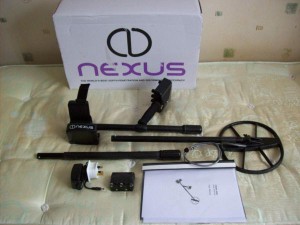 Credo DDM ground balancing system can be, as stated above, manually or automatically controlled. I’ve found that, in manual mode, the knob that allows to set the balancing point is a little bit too coarse for my tastes. I prefer have a better resolution to have a perfect fine tuning. During my field tests I’ve noticed that probably the best way to set it is by keeping the machine slightly overbalanced. In this way the metal detector will be very stable, silent and false readings will be very occasional. People with steel nerves and strong hearts could set it slightly underbalanced, making it a little nervous, but this will let you gain exceptional power, never seen on other VLF machines.
Credo DDM ground balancing system can be, as stated above, manually or automatically controlled. I’ve found that, in manual mode, the knob that allows to set the balancing point is a little bit too coarse for my tastes. I prefer have a better resolution to have a perfect fine tuning. During my field tests I’ve noticed that probably the best way to set it is by keeping the machine slightly overbalanced. In this way the metal detector will be very stable, silent and false readings will be very occasional. People with steel nerves and strong hearts could set it slightly underbalanced, making it a little nervous, but this will let you gain exceptional power, never seen on other VLF machines.
Credo DDM is a Power Monster. We could compare it to a Lamborghini of metal detectors. But, as with all the Hyper-Cars, you will need to have patience and perseverance to master it and not get off the road after the first curve.
I wonder what could happen with the hi-end model, Standard Mk3, that features high-energy coils driven at 124 Volts! Can’t wait to test it!!!!
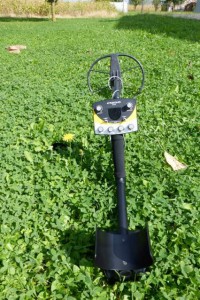 The Credo DDM discrimination is very very good. The analog knob allows you to discriminate unwanted targets in a very efficient way. The enclosed handbook will also help you to set it to discriminate little or big targets.
The Credo DDM discrimination is very very good. The analog knob allows you to discriminate unwanted targets in a very efficient way. The enclosed handbook will also help you to set it to discriminate little or big targets.
As usual, the first field tests I do with all the detector I put my hands on are in the most terrible conditions: heavily mineralised soil (high concentration of hematite and rusty iron bits), High Power and Telephone poles just over my head. In this terrible conditions, ground balancing is not easy at all. But you just have to put the Credo DDM a little bit overbalanced and it will become docile as a little lamb… with wolf teeth!
During true search and controlled tests, Credo DDM showed up a really brutal power. As you can see from my videos, for raw depth and iron masking handling, it was one of the most performing machine I ever had the chance to use.
Once again, to be intellectually honest, the 13” DD coil maybe is not the very best choice for extreme soil conditions but with the right setting you will be able to work everywhere with great satisfation.
Multitone, as said above, needs some training to master its “analog” nature, but I’m sure that it will take just few hunting session to learn how to recognize the different target with good precision. The LED visual sistem is very handy and helpful to shorten the learning curve and it is a perfect complement to the audio system.
Recovery speed could be set in three different mode with the proper switch. It will be effective and even with the large 13”DD you will have very good performance in target separation. Don’t expect any miracle… but it will work very good. If you need a more surgical coil, better mount a 10” or a 7” DD.
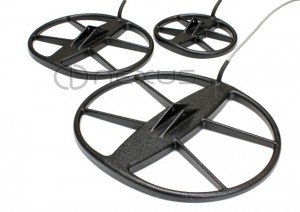 On poorly mineralised soild, where I usually take the machines for the next series of tests, I was able to verify the depth and discrimination capabilities. In the videos I’ve shot, even not pushing the detector to the limits, I’ve demonstrated its outstanding performances. Even with this easier conditions, multitone requires a little skilled “ear”, but I’m sure that patience will bring the user to great results and satisfaction.
On poorly mineralised soild, where I usually take the machines for the next series of tests, I was able to verify the depth and discrimination capabilities. In the videos I’ve shot, even not pushing the detector to the limits, I’ve demonstrated its outstanding performances. Even with this easier conditions, multitone requires a little skilled “ear”, but I’m sure that patience will bring the user to great results and satisfaction.
This time I have not published the air test results. Why? Simply because the values are incredible! I’ve never had such huge air-test performance. That’s why I decided not to be biased by air-tests and I focused on true on the field verifications.

In conclusion, today Credo DDM can be considered a machine that, in the right hands, could give you extraordinary results. It will take a little patience, application, and a bit of good ol’ school hunting “tricky” attitude to give its best. I honestly could have prefererred a ground balancing system with a wider resolution, that could allow even beginners to set it in a more precise way. But “Stallions” are always like this… Wild, powerful…and so charming to tame…
Leonardo/”Bodhi3″
Director AMD Tech Team
VIDEOTEST (Italian Language) – Click HERE
Informations:
Mediaelettra – Web: www.mediaelettra.com
Nexus Metal Detectors – Web: www.nexusdetectors.com
PS. Some photos are taken from the Net. Any request of copyright deny of pubblication will lead to an immediate photo removal. I want to thank the original photographer for their kind contribution.
